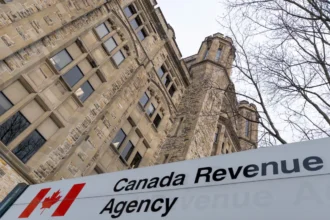The Canada Border Services Agency (CBSA) plays a critical role in facilitating and regulating the entry of new immigrants into Canada. Whether you are arriving as a permanent resident, temporary worker, student, or visitor, understanding and complying with CBSA requirements is essential for a smooth immigration process.
This comprehensive guide provides detailed information on the CBSA’s role, documentation requirements, customs procedures, and practical tips to help new immigrants navigate the entry process effectively.
What Is the CBSA?
The CBSA is a federal agency responsible for enforcing Canada’s immigration and customs laws at the border. Its primary functions include inspecting documents, verifying identities, and ensuring compliance with regulations to maintain the safety and security of Canada.
Key Responsibilities:
- Immigration Control:
- Processing and admitting eligible immigrants and travelers.
- Customs Enforcement:
- Monitoring goods entering the country and collecting duties and taxes.
- Border Security:
- Preventing illegal entry and ensuring compliance with Canadian laws.
Preparing for Arrival in Canada
Proper preparation is crucial for new immigrants to meet CBSA requirements and avoid unnecessary delays or complications upon arrival.
1. Review Your Immigration Documents
Ensure you have all required immigration documents readily available, including:
- Confirmation of Permanent Residence (COPR) or Temporary Resident Visa (TRV).
- Passport valid for the duration of your stay.
- Letter of Introduction (if applicable, for study or work permits).
- Visa and travel documents for dependents (if applicable).
2. Understand Your Immigration Status
- Determine your category (e.g., permanent resident, temporary worker, international student) and know the specific requirements for your status.
3. Pay Applicable Fees
- Ensure that all immigration fees (e.g., permanent resident fee, work permit fee) are paid before your arrival. Carry proof of payment.
4. Prepare Proof of Funds
- Depending on your visa type, you may need to provide proof of sufficient funds to support yourself and your family. Acceptable documents include bank statements, employment letters, or sponsorship letters.
5. Carry Supporting Documents
- Include educational transcripts, employment letters, and any additional documents required for your immigration category.
Arrival at the Port of Entry
The port of entry is your first interaction with CBSA officials. It’s crucial to approach this step with confidence and preparedness.
1. Follow Signage and Instructions
- Upon arrival, proceed to the immigration counter designated for newcomers or non-Canadian citizens
2. Present Required Documents
- Hand over your passport, visa, COPR, and any other requested documents to the CBSA officer.
3. Answer Questions Honestly
- The CBSA officer may ask questions about your immigration status, purpose of visit, or intended activities in Canada. Answer truthfully and provide clear explanations.
4. Undergo Identity Verification
- Your fingerprints and photograph may be taken for biometric verification.
5. Declaration of Goods
- Declare any goods or funds exceeding CAD 10,000 and ensure you comply with customs regulations.
6. Receive Stamped Documents
- If approved, the CBSA officer will stamp your passport and issue any necessary permits (e.g., work or study permit).
Customs Declaration for New Immigrants
All new immigrants must declare goods and personal belongings they are bringing into Canada. Failure to declare can result in fines or penalties.
1. Prepare a Detailed List
- Create a list of items you are bringing with you, including electronics, jewelry, and household goods.
2. Goods to Follow
- If you are shipping items later, complete a Goods to Follow form (BSF186) and present it to the CBSA upon arrival.
3. Restricted and Prohibited Items
- Be aware of items that are restricted or prohibited, including:
- Firearms.
- Certain foods, plants, and animal products.
- Controlled substances.
4. Declare Currency
- If carrying more than CAD 10,000, declare it to the CBSA. This includes cash, traveler’s cheques, and other monetary instruments.
CBSA Requirements for Specific Immigrant Categories
The CBSA has tailored requirements based on the type of immigration status. Here’s a breakdown for common categories:
1. Permanent Residents
- Present your COPR and passport.
- Update your Canadian address for the permanent resident card to be mailed.
2. International Students
- Provide your Letter of Introduction, proof of enrollment, and study permit (if issued prior to arrival).
- Carry proof of funds and accommodation details.
3. Temporary Foreign Workers
- Present your work permit or Letter of Introduction and job offer.
- Show proof of sufficient funds if required.
4. Visitors
- Demonstrate the purpose of your visit and proof of ties to your home country (e.g., return ticket, employment letter).
Managing Biometric and Security Requirements
Biometrics and security screenings are standard procedures for many immigrants.
1. Biometric Collection
- If biometrics were not submitted during the visa application process, they may be collected at the port of entry.
2. Background Checks
- Be prepared for additional screening if flagged for random or detailed background checks.
3. Travel History
- Have a record of your travel history and previous visas readily available.
Special Considerations for Family Members
If traveling with dependents or family members, ensure that their documentation is complete and up-to-date.
1. Dependent Visas
- Ensure that dependents have their own visas or permits as applicable.
2. Proof of Relationship
- Carry marriage certificates or birth certificates to confirm relationships.
3. School Enrollment for Children
- For school-aged children, include enrollment letters or inquiries with local schools.
Resolving Issues at the Border
If issues arise during your interaction with the CBSA, here’s how to handle them:
1. Document Discrepancies
- Provide additional evidence, such as email correspondence with immigration officials, to clarify discrepancies.
2. Detention or Delays
- Remain calm and cooperative. Request legal representation if necessary.
3. Secondary Inspection
- If referred for secondary inspection, answer all questions honestly and provide requested documents.
Post-Arrival Responsibilities
After passing through the CBSA, new immigrants have additional responsibilities to complete their settlement process.
1. Apply for a SIN (Social Insurance Number)
- Visit a Service Canada office to apply for a SIN, required for work and accessing government services.
2. Register for Healthcare
- Apply for provincial healthcare coverage as soon as possible.3. Set Up a Bank Account
- Open a Canadian bank account to manage finances and build credit.
4. Update Address with Immigration
- Notify Immigration, Refugees, and Citizenship Canada (IRCC) of your updated address for correspondence.
Tips for a Smooth Interaction with CBSA
- Be Organized:
- Keep all documents easily accessible in a travel folder.
- Arrive Early:
- Allow sufficient time for processing at the port of entry.
- Understand the Rules:
- Familiarize yourself with customs regulations and CBSA requirements.
- Be Polite and Honest:
- Maintain a respectful and cooperative demeanor during interactions.
Frequently Asked Questions (FAQs)
1. What Happens If I Don’t Have All My Documents?
You may be delayed or refused entry. Contact your immigration advisor for guidance.
2. Can I Bring My Pet to Canada?
Yes, but you must comply with specific import requirements for pets, including vaccinations and permits.
3. What If I Declare Goods Later?
Use the Goods to Follow form to declare items arriving after your entry.
4. How Long Does It Take to Clear CBSA?
Processing times vary based on traveler volume, documentation, and additional screenings.
5. What Is Secondary Inspection?
This is an in-depth review of your documents and eligibility. It does not mean you are in trouble but may require additional questioning.
Conclusion
Navigating the Canada Border Services Agency (CBSA) requirements is a critical step for new immigrants entering Canada. By understanding the process, preparing the necessary documents, and adhering to customs and immigration regulations, you can ensure a seamless transition into your new life in Canada. Proper preparation and clear communication with CBSA officers will help you avoid delays and start your journey in Canada on the right foot.



